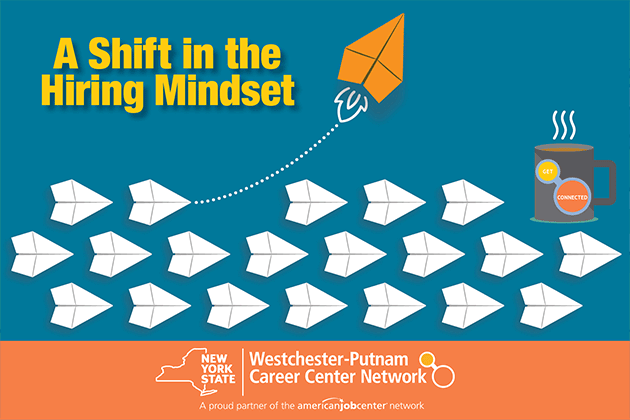
By Allison Madison, President, Madison Approach Staffing, Inc. and WPWDB Board Member
You’ve been searching for the right employee(s) to join your organization, but due to the national labor shortage it’s been more of a challenge than expected. You increase wages and beef up the benefits package in the hopes it will increase qualified applications, but still no luck. So what do you do now? How do you design a hiring plan to find and retain reliable staff in this new workforce landscape? Here are some ideas for shifting your hiring mindset to illuminate new possibilities:
One Size Doesn’t Fit All: Most people are under a lot of financial pressure. Housing prices have risen dramatically, parents are squeezed between childcare and eldercare, health insurance and healthcare costs are a major concern, college tuition/debt is sky rocketing, retirement savings, and vacation time are always important variables. Ask your candidate(s) what weighs most on their minds and compile a custom benefits package that fits their needs.
Do what you love and never work a day in your life: We live in a passion-driven culture, and to meet the demands of potential candidates, employers may need to rethink job descriptions, and day-to-day task assignments. While not every job is exciting and fulfilling, possibly there is a way to change up the daily routine and rotate assignments to alleviate monotony, and create purpose. Also, as an employer, be honest and transparent about business growth plans and pay-scale. How are you continuing to improve your company, and what can employees do to upskill and advance? Recruits expect to grow beyond their initial role at a fast pace and want goals to aspire to.
Rethink the 9-5 Paradigm: It’s important to understand that the traditional 5-day-a-week workweek requires more than 40 hours of your employee’s time. If your employee isn’t working remotely, chances are they are spending about 1.5 hours a day on their daily commute to and from the workplace. Additionally, after hours work emails and texts extend the workday far beyond 40 hours. With modern tools like the internet, virtual meetings, mobile devices, email, texts, streaming, and social media—creating a new work schedule formula that meets the demands of the organization and the needs of employees are what candidates are looking for.
The Value of a Reciprocal Relationship: It’s tough for employers to relinquish the driver’s seat in the employer/employee relationship but consider a job offer a mutually beneficial transaction instead of a benevolent favor. It’s more respectful and productive when BOTH parties are satisfied with the agreement. Additionally younger hires will ask you as many questions as you ask them, so be prepared to do some selling. Hiring someone new is an investment and needs to be a good fit for both parties.
Work Life Balance: An employee’s personal time is their own and they shouldn’t feel guilted into giving more than they are compensated for to get ahead. They have families, friends, and hobbies outside of work and they are trying to maintain life balance, which is healthier in the long run. While a lot of employers throw the term “family” around to make their employees feel valued, it is a tactic that will eventually backfire because it misleads the employee. They are there to work because they are getting paid. Acknowledge good work fairly and equitably, and make it clear you, as an employer, value the separation between the workplace and private lives to your candidates. They will appreciate it.
Creating an Interactive Work Culture: While work isn’t designed to be fun, it is designed to drive profits and results, which requires coordination and trust between colleagues. Consider finding ways to team build to improve collaborative skills, while allowing your employees to get to know each other and enjoy themselves. Break your employees up into teams and introduce an innovative analytical problem. This is also a great way to show your prospect that they will gain skills and make valuable connections, while maintaining a healthy focus on your business.
The pandemic accelerated changes in the workforce and the workplace, which took many hiring managers and business owners by surprise. It’s time to get creative and reconfigure our hiring mindset. Lead on!


